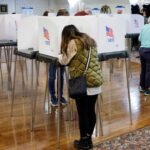
By Parisa Hafezi
DUBAI, Nov 3 (Reuters) – As a child in Iran, Shideh heard her parents warn her older siblings against taking part in anti-government demonstrations because of the bloody crackdown that would follow. But today, with protests raging across Iran, things have changed.
Both Shideh – now a teenager – and her mother say they have joined seven weeks of demonstrations ignited by the death of a 22-year-old woman, Mahsa Amini, in the custody of Iran’s morality police.
The protests triggered by Amini’s death on Sept. 16 have shown the defiance of many young Iranians in challenging the clerical leadership, overcoming fear that has stifled dissent in the wake of the 1979 Islamic Revolution.
“I have one life and I want to live it freely,” said Shideh, 17, who asked that her family name not be used. “We are not scared of being killed. We will eventually change the regime.”
Her sentiment was echoed by a dozen young Iranians from across the country interviewed by Reuters by phone. The students, who asked not to be named, said the protests reflect what many young Iranians see as a darkening future for a country ruled by hardliners seeking to tighten rigid social controls.
Iranian officials, who have blamed Amini’s death on preexisting medical problems, say the unrest has been fomented by foreign enemies including the United States, and accuse armed separatists of perpetrating violence.
Iran’s interior ministry and chief of police’s office did not immediately respond to a request for comment for this story.
The authorities have used tried-and-tested means of quelling dissent – from tear gas and bullets to intimidation and arrests – many young demonstrators have remained unbowed.
“Shoot us! We are not afraid anymore,” shouted a small group of young women kneeling without their headscarves in front of riot policemen in Tehran last week, in one video shared on social media.
More than two-thirds of Iran’s 85 million people are under the age of 30. Even if the latest protests subside, the fearlessness of young Iranians could spell more trouble ahead for the establishment, according to rights activists, analysts and one former moderate official, who spoke to Reuters on condition of anonymity.
The power wielded by Iran’s security apparatus still looms large: Shideh and her mother declined to be identified for safety reasons, and also requested their location in Iran not be disclosed.
But for Shideh’s mother, the death of Amini – who was arrested for “inappropriate attire” – marked a turning point.
It “changed everything”, she said.
Too frightened to oppose Iran’s ruling clerics for years, she has joined thousands of women at the forefront of protests that have turned into a revolt against what demonstrators describe as increasing authoritarianism.
“I cried for days for Mahsa. My Shideh could be arrested by the morality police and killed like Mahsa. That thought hit me hard,” said her mother, speaking from her home in central Iran.
“As a mother, I feel I should stay on the streets and reclaim Iran for my daughter, for all Iranian girls.”
SYMBOL OF GRIEVANCES
Amini’s death has become a symbol for many of the manifold grievances in Iranian society, galvanising some protesters to demand the downfall of the Islamic Republic.
As a young woman, her death sparked anger among Iranians who do not want their daughters arrested because of how they dress. As a Kurd, her death touched on long-standing minority grievances in Iran, a mosaic of ethnic and religious groups that say they have long faced discrimination by Tehran.
Experts on Iran say the clerical establishment’s staying power has been underpinned since the 1979 revolution by its willingness to use whatever force is necessary to silence dissent.
But “fear has a limit, like repression”, said Saied Golkar, an Assistant Professor of political science at the University of Tennessee at Chattanooga.
“There is a turning point when repression and fear don’t work anymore: when people realize they have power when they act collectively and when they fear the gloomy future more than the regime,” he said.
For the first time, schoolgirls have taken into streets, along with thousands of Iranians from all walks of life, including ethnic minorities.
“It’s a revolution to end years of discrimination. We will not remain silent,” said Ziba, 15, who has been protesting in Iran’s Kurdish region. “We want freedom for all Iranians, from Baluchis to Kurds and Turks.”
BREAKING TABOOS
Security forces have fiercely confronted the protesters, killing at least 300 of them – including 45 minors – wounding hundreds and arresting thousands, according to rights groups.
Iranian authorities have denied children were killed during the unrest.
Security forces have raided several schools across the country, detaining schoolgirls, according to videos posted on social media, which Reuters was unable to verify. They fired teargas outside a Tehran school after a clash between staff, students and parents when the principal insisted on checking girls’ phones, according to the one of the videos.
Other social media images have shown schoolgirls tearing up pictures of Supreme Leader Ayatollah Ali Khamenei and the late founder of the 1979 Islamic revolution Ayatollah Ruhollah Khomeini, burning their veils and knocking clerics’ turbans from their heads in the streets.
Such taboo-breaking moments reflect a widening gap between Iran’s clerical leadership and a young population, analysts say. Many young Iranians have long called for the lifting of social restrictions, such as internet censorship and strict dress codes.
The dozen schoolgirls and university students from across Iran interviewed by Reuters – drawn from different ethnic groups and backgrounds – expressed hope the protests could be a turning point.
“They can kill us. They can arrest us. But it is the start of their end,” said Farzaneh, 16, in a southern Iranian city. “Maybe today. Maybe next week or next month. But our revolt is irreversible.”
However, Sanam Vakil, deputy director at the Royal Institute of International Affairs, said she still expected to see a robust pushback by Iran’s security forces, involving “more violence and intimidation and fear”.
Iran’s most widely feared force, the Revolutionary Guards – a hardline military force used by the state to crush political unrest – have yet to be deployed to quell the protests but its top commander warned demonstrators on Saturday to get off the streets.
“PUSHING FOR CHANGE”
Yet unrest among university students, who played a major role in toppling the U.S.-backed shah in 1979, is far from dying down, with protests persisting at over 130 universities.
With student numbers swelling in Iran’s young population, such signs of growing dissent cannot be easily ignored by the authorities, a former moderate official said.
“These protests will end eventually but wounds will remain and rifts will deepen. We should be worried about future protests,” he said.
With deepening economic misery, largely because of U.S. sanctions over Tehran’s disputed nuclear work, many young people are feeling the pain of galloping inflation and rising joblessness.
Inflation has soared to over 50%, the highest level in decades. Youth unemployment remains high with some 50% of Iranians being pushed below the poverty line, according to reports by Iran’s Statistics Center.
By defying state warnings to end protests, students have paid a heavy price. Security forces have raided university campuses, arrested hundreds of students and injured many more, according to witnesses, social media videos and rights groups.
“We’re angry over years of repression, over a dark future,” said a student at Tehran’s Sharif university, where security forces used teargas and pellet guns to disperse students repeatedly. “We want freedom. We want a future.”
Ali Fatholla-Nejad, an Iran expert with American University of Beirut, said the clerical rulers were themselves being engulfed by a “revolutionary process” and would likely face more unrest in the future.
“If the current uprising is fully repressed, the next eruption of popular anger may also be a question of time,” Fatholla-Nejad said. (Writing by Parisa Hafezi; Editing by Tom Perry and Daniel Flynn)




